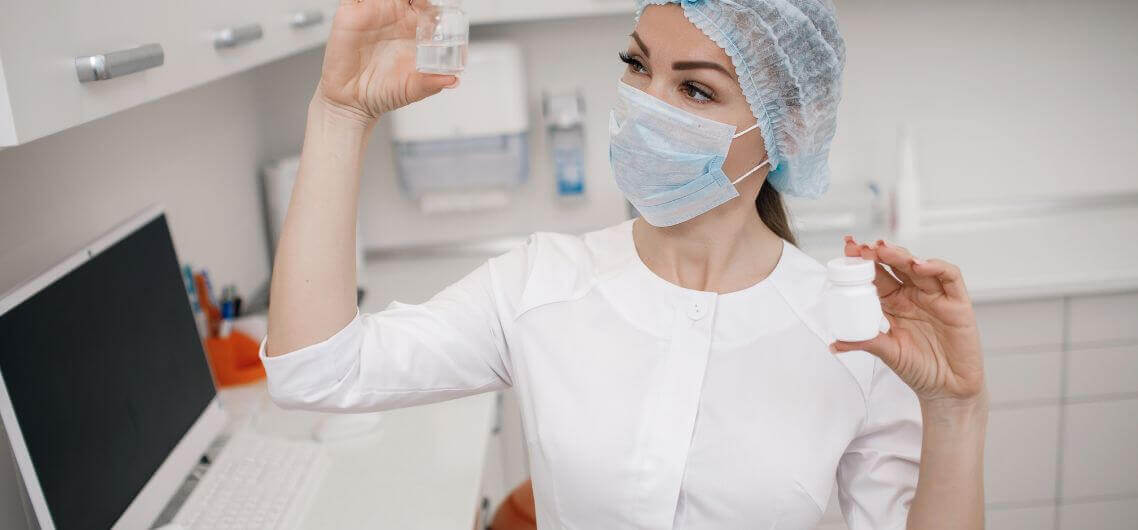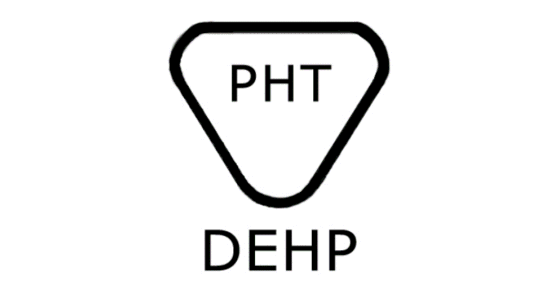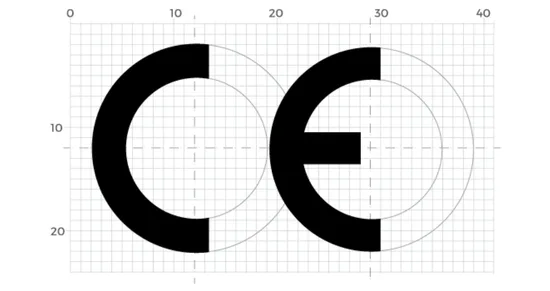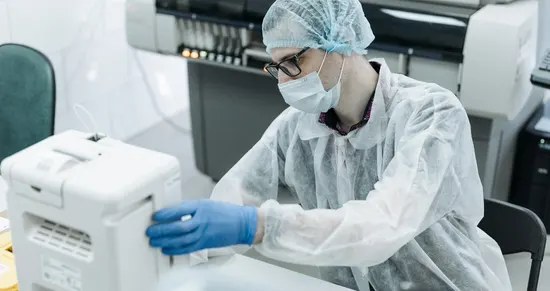The European Commission has published Guidelines concerning the use of phthalates in medical devices
Phthalates: why you need to know about these chemicals
Also known as plasticizers, phthalates are also commonly found in food packaging and plastics
What are phthalates?
Phthalates are a group of chemicals most commonly used to make plastic more flexible and harder to break. Pthalates also act as a binding agent or a solvent. Also known as plasticizers, Phthaletes are found in a wide range of products and were first introduced in the 1920s as an additive in polyvinyl chloride (PVC) and some healthcare products, such as insect repellent.
Phthalates’ effects on humans have not been studied extensively, but phaletes are believed to be an endocrine-disrupting chemical (EDC) that can alter hormonal balance and potentially cause reproductive, developmental and other health issues.
The European Commission’s Scientific Committee on Health, Environmental and Emerging Risks (SCHEER) has published Guidelines concerning the use of phthalates in medical devices.
The Guidelines concern the benefit-risk assessment of the presence of phthalates in certain medical devices covering phthalates which are carcinogenic, mutagenic and toxic to reproduction (CMR) or have endocrine-disrupting (ED) properties.
The Guidelines have been drafted and adopted in light of the EU Medical Devices Regulation (MDR) which will be applicable on 26 May 2020 and are intended to be used by manufacturers, notified bodies and competent authorities.
Phthalates In EU
The SCHEER adopted the Guidelines on 18 June 2019 after a public consultation. The Guidelines build upon the Scientific Committee’s on Emerging and Newly-Identified Health Risks (SCENIHR) Opinion on the safety of medical devices containing DEHP plasticized PVC or other plasticizers on neonates and other groups possibly at risk (2015 update).
The Guidelines provide that the above-mentioned approach may also be used to conduct a benefit-risk assessment of other CMR/ED substances present in medical devices.The Guidelines describe how to evaluate the possible alternatives for these phthalates used in medical devices.
The Guidelines describe how to evaluate the possible alternatives for these phthalates used in medical devices. The description includes the evaluation of alternative materials, designs or medical treatments.
CMRs are classified in accordance with Regulation No 1272/2008 on classification, labelling and packaging of substances and mixtures in the EU.
Chapter II Section 10.4 of Annex I to the MDR allows for a limited use of CMR 1A/1B[1] and/or ED substances in medical devices when a Benefit-Risk Assessment justifies the use of the phthalates
The Guidelines explain that phthalates are widely used in industry as plasticisers of polymers and as additives. The phthalates may be released into the environment and into the human body if the medical device is in contact with it. The Guidelines provide guidance on when and how to determine whether the use of phthalates can be justified.
The Guidelines have been prepared in light of the EU MDR. It can, however, not be excluded that competent authorities and notified bodies will consider these Guidelines as the state of the art guidance concerning the use of phthalates in medical devices.
The Guidelines provide a step by step overview on how to assess the use of the phthalates by conducting a benefit-risk assessment. The steps that need to be considered include the availability of alternative substances, materials, designs and medical treatments and the risk of the use of the phthalates compared to the available alternatives. Manufacturers need to evaluate the impact of the possible alternatives on the functionality, performance and the overall benefit-risk ratio of the medical device.
Please do not hesitate to contact us if you have questions about these new guidelines.
Phthalates In Medical Devices
Summary
The phthalates reviewed in this guideline fall into two chemically distinct groups.
The ortho-phthalate esters DBP and DEP are low-molecular weight (R-alkyl backbone of 3 or less carbon atoms =C3) di-esters of ortho-phthalic acid (also called phthalic acid), formed from short-chain alcohols. The high molecular-weight phthalate polymers; CAP, HPMCP and PVAP, are polymers modified by esterification with ortho-phthalic acid groups.
The phthalates restricted from toys and food articles in the EU due to evidence of endocrine disruption, have been the low-molecular weight ortho-phthalates.
As the safety of the phthalates is undergoing review across the EC, and as a precautionary measure to safeguard public health, this guideline aims to review the safety of the most commonly used phthalates in the EU, some of which do not fall under the designation of ortho-phthalates, to rule out potential adverse effects arising from current pharmaceutical applications.
Key Health Risks Linked to Phthalates
Phthalates are a group of chemicals commonly used as plasticizers in medical devices, food packaging, and consumer products. Despite their widespread use, concerns have emerged regarding their potential health risks, particularly their role as endocrine-disrupting chemicals (EDCs).
One of the major health concerns associated with phthalates is their ability to interfere with hormonal balance. Studies suggest that certain phthalates, such as DEHP and DBP, may affect reproductive health by reducing testosterone levels, leading to developmental issues in male infants. Exposure during pregnancy has also been linked to reduced anogenital distance in newborns, a potential marker of reproductive dysfunction.
Furthermore, phthalates have been associated with adverse developmental effects. Research indicates that prenatal exposure may impact fetal development, potentially leading to neurodevelopmental disorders, reduced cognitive function, and behavioral issues in children. Some studies also suggest a link between phthalates and an increased risk of asthma and allergic reactions.
In addition to reproductive and developmental concerns, phthalates are classified as potential carcinogens and mutagens. Long-term exposure has been linked to an increased risk of liver and kidney toxicity, raising concerns about their presence in medical devices that come into prolonged contact with the human body.
Given these risks, regulatory bodies like the European Commission have issued guidelines for assessing the benefit-risk ratio of phthalates in medical devices. Manufacturers are now required to explore safer alternatives to minimize patient exposure and ensure compliance with evolving regulations.
Carcinogenicity
Carcinogenicity refers to the potential of a substance to cause cancer by inducing genetic mutations or disrupting cellular processes. Phthalates, commonly used in medical devices, have raised concerns due to their potential carcinogenic effects. Some studies suggest that prolonged exposure to certain phthalates may increase the risk of tumor formation, particularly in the liver and reproductive organs. The European Union regulates carcinogenic, mutagenic, and toxic to reproduction (CMR) substances under strict guidelines. Manufacturers of medical devices containing phthalates must conduct a benefit-risk assessment to determine if safer alternatives are available and justify the continued use of these chemicals.
Mutagenicity
Mutagenicity refers to the ability of a substance to cause genetic mutations, potentially leading to adverse health effects, including cancer and birth defects. Certain phthalates, such as DEHP and DBP, have been studied for their mutagenic properties, with some evidence indicating DNA damage in laboratory tests. The European Commission’s regulations require a thorough assessment of phthalates in medical devices, ensuring that their use does not pose an unacceptable risk. Researchers continue to investigate the mutagenic potential of these chemicals, emphasizing the need for alternative materials that maintain medical device functionality while minimizing health hazards.
Reproductive Toxicity
Reproductive toxicity involves adverse effects on fertility, embryonic development, and overall reproductive health due to chemical exposure. Phthalates, particularly DBP and DEHP, have been linked to reproductive toxicity in both animal and human studies. Prenatal exposure to these chemicals has been associated with reduced sperm count, hormonal imbalances, and developmental abnormalities in offspring. European guidelines restrict the use of phthalates in medical devices unless manufacturers can justify their necessity through a benefit-risk assessment. The push for safer alternatives aims to reduce the potential reproductive risks posed by these substances while maintaining the performance of medical devices.
Endocrine Disruption
Endocrine disruption occurs when chemicals interfere with the body’s hormonal system, leading to developmental, reproductive, neurological, and immune issues. Phthalates are classified as endocrine-disrupting chemicals (EDCs) due to their ability to mimic or block natural hormones, particularly estrogen and testosterone. Studies have linked phthalate exposure to reduced fertility, metabolic disorders, and developmental defects. Regulatory bodies, including the European Commission, mandate strict assessments for phthalates in medical devices, requiring manufacturers to evaluate potential alternatives. The growing concern over endocrine disruption has intensified efforts to phase out high-risk phthalates and replace them with safer, non-toxic materials in medical applications.
Carcinogens, Mutagens and Substances Toxic to Reproduction (CMR)
The CHMP article 5(3) scientific opinion on ‘The Potential Risks of Carcinogens, Mutagens and Substances Toxic to Reproduction (CMR) When These Are Used as Excipients in Medicinal Products for Human Use’ states under section 4 “Any risk identified for an excipient and in particular a CMR substance, would be acceptable only on condition that this excipient cannot be substituted with a safer available alternative, or that the toxicological effects in animal models are considered not relevant for humans (e.g. species specific, very large safety ratio) or where the overall benefit/risk balance for the product outweighs the safety concern with the product”. Hence, it is encouraged to replace potentially toxic excipients with safer alternatives, as it cannot be excluded that the adverse effects caused by the excipient in non-clinical studies on reproduction and development are of clinical relevance.
The metabolites of several phthalates, including the DBP metabolite MBP, have been detected in the amniotic fluid of pregnant women indicating that exposure to DBP can occur in utero (Huang et al. 2009, Wittassek et al. 2009, Jensen et al. 2012). Moreover, DBP has been identified in human breast milk which suggests that breastfeeding may be a source to infant phthalate exposure (Zimmermann et al. 2012).
Some clinical studies indicate an association between the level of the DBP metabolite MBP present in prenatal maternal urine samples and reduced anogenital distance in male newborns (Swan et al. 2005, 2008). This finding has however not been confirmed by others (Suzuki et al. 2012; Huang et al. 2009).
Phthalates In Medical Devices
This document provides specific recommendations on the use of the phthalates DBP and DEP and PVAP as excipients in human medicinal products. Data currently available for the phthalates CAP, HPMCP and PVAP do not indicate that their presence of in human medicinal products constitutes a potential risk for human safety.
Adverse reproductive and/or developmental effects have been observed in non-clinical studies conducted with DBP and DEP. Due to the lack of pharmacokinetic exposure data in humans and rats for these excipients, it can presently not be excluded that the findings made are of clinical relevance. As a result, Permitted Daily Exposure (PDE) values are established for DBP and DEP based on the approach described in Appendix 3 of the ICH Q3C (R4) guideline.
For existing authorized medicinal products, it is proposed to set a time limit of 3 years (after coming into force of the final guideline) for the implementation of formulation changes and consequential regulatory applications, as necessary.
The presence in medicinal products of DBP or DEP at levels giving rise to daily exposures above the PDEs could be accepted as exceptions, on a case-by-case basis taking into consideration the intended patient population, the disease seriousness and the presence or not of alternative treatment options. For instance, in severe or terminal disease conditions, the strict application of the PDE is not considered necessary for DBP or DEP-containing medicinal products where the risk of reproductive and developmental toxicity is outweighed by the benefits of treatment for patients. In such cases the potential risk of the presence of DBP or DEP above the PDE should be reflected in sections 4.6 and 5.3 of the Summary of Products Characteristics. Following the review of available in vitro and animal data and due to the absence of sufficient clinical evidence of phthalate-induced toxicity in humans, information in the label and package are not considered necessary.
The justification for using CMR/ED substances such as phaletes above 0.1% w/w in a medical device must be based on an analysis and estimation of potential patient and user exposure, an analysis of possible alternatives, an argumentation why possible alternatives are inappropriate, and on the latest scientific committee guidelines. Thus, the preliminary guidelines provide guidance on benefit-risk considerations, including how, for an individual device, to:
- analyse and estimate potential patient or user exposure to the substance,
- analyse possible alternative substances, materials, designs, or medical treatments,
- justify why possible substance and/or material substitutes, if available, or design changes, if feasible, are inappropriate in relation to maintaining the functionality, performance and the benefit-risk ratios of the product, including taking into account if the intended use of such devices includes treatment of children, pregnant or breastfeeding women, or other patient groups considered particularly vulnerable to such substances and/or materials.










